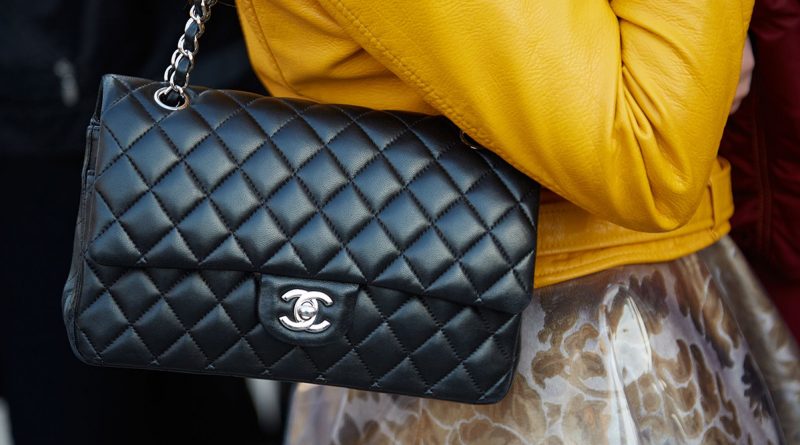Chanel Handbags Are Now The New Investment Option
Get rid of the Château Latour and the Jackson Pollocks. Instead, make some room in your collection of high-status, high-value objects for the Chanel handbags and Rolex watches. This is what Credit Suisse has to convey to you.
Credit Suisse, a Swiss bank, has analyzed collectibles. The aim was to determine what to appreciate the most during periods of severe inflation.
So, what does the report say?
It stated in a paper that fine wines, modern and contemporary art, as well as American and Latin American art, tend to suffer under high-inflation regimes. Meanwhile, Chanel handbags, traditional Chinese pieces of art, and wristwatches give the most inflation protection.
According to the article, the worth of Chanel bags—preferably Karl Lagerfeld-designed ones—increases by 7% during regular times. Meanwhile, it hiked by 17% during periods of high inflation. Similarly, Rolex watches have performed well. They increased by 6% in years with moderate inflation and 8% in years with high inflation.
The bank conducted the research in conjunction with Deloitte. And it shows that the price of fine wines often declines by as much as 11% during high-inflation years.
However, inflationary periods have also been relatively terrible for American art, Old Masters, and old autos.
How do Chanel handbags make an investment option?
You might not see luxury handbags as the traditional means of investment. However, they make for a savvy option, and that too amid talks of a recession. The recent collectibles report by Credit Suisse Deloitte shows that vintage Chanel handbags have grown in value. In fact, we’ve seen them outperforming other traditional collectibles.
Some have even sold these bags at a price 3X their original prices and have gained huge profits.
Credit Suisse’s collectibles report’s top 3 highlights about Chanel handbags
#1. Chanel bags have emerged as better financial assets with strong demand
The scarcity effect will continue to help Chanel handbags designed by Lagerfeld in the coming years. However, the brand’s overall evolution in the luxury handbag market will depend on its ability to maintain collectors’ enthusiasm in the future. In contrast to Chanel bags, Hermès Birkin bags have experienced greater volatility.
#2. Given their low volatility, luxury handbags give investors additional security
In terms of stores of value with low volatility (between 2.5 percent and 5 percent annually) and low drawdowns, watches, jewelry, and handbags—especially Chanel handbags—stand out. Their annual returns range from 4.5 percent to 6.5 percent, except for pocket watches. Moreover, their information ratio is excellent. Their values are above 100%, indicating that average returns consistently outpace fluctuation ranges. This ratio measures returns in relation to volatility. Thus, it’s a reflection of risk-reward. Besides, Rolex watches and Chanel handbags stand out in particular. They both have extremely significant information ratios of 200 percent or greater. For example, in other words, the typical fluctuation range of 5 percent is doubled by the average annual return of 10 percent for Rolex watches.
#3. You can avoid inflation and increase your financial stability with Chanel bags during a recession
It is important to assess how sensitive certain collectibles are to inflation and interest rates. 2022 will witness a change to a more extreme inflation regime and higher interest rates. Therefore, it’s important for you to invest carefully when it comes to collectibles. However, handbags made by Chanel provide the best inflation protection (as determined by performance during extreme inflation times). On the other hand, post-war and contemporary art do best during periods of low or normal inflation. Moreover, Rolex watches seem to be the best all-weather inflationary stores of value.
What is the cause of this expansion and how has it affected the resale market?
The main factor driving Chanel’s exponential growth is its price strategy. Recently, Chanel has increased its costs several times. For example, the cost of its Medium Classic Flap has increased by more than 35% since 2020.
Besides, the recent increase in demand for Vintage Chanel bags is raising the cost of bags that are 20–30 years old.
So, what about the collectors of wine and other collectibles?
The chief investment officer for Credit Suisse in Europe, Nanette Hechler-Fayd’herbe, had some advice for fine wine collectors. She says a fifth of bottles from the most known châteaux is believed to be fake.
However, she cautioned that one should interpret the results cautiously. They are based on collectible indices in various methods and for varying lengths of time. For example, handbags cover Just 14 years of the index.
Besides, the tracker record for non-fungible tokens is still much shorter. NFT is another new collecting type people have recently gotten into.
What are the reasons why these collectibles lose their value during high inflation periods?
Often the majority of these collectibles fail to state their genuine returns. The reasons are that they neglect to account for auction fees, insurance, storage, and authenticity. Therefore, they end up overexaggerating the returns. According to the survey, 20% of wine claiming to be from the most well-known chateaux is thought to be fake. Additionally, they reflect current fashions. Nobody wants to discuss the losses suffered by collectors of once-valuable items. For example, mahogany furniture and some postal stamps.
According to Credit Suisse, the lockdown period of 2021 and the beginning of 2022 were both favorable times for the value of numerous collectibles. However, it is now anticipated that returns would deteriorate due to rising interest rates and elevated inflation, particularly in the US and UK.
Hechler-Fayd’herbe claimed that many of Credit Suisse’s wealthy clients gathered collections primarily out of interest or passion. However, now they also anticipated making a profit from them, at least on paper.
So, the end of an era of ultra-low interest rates is anticipated to lower collectible prices. And it could be because it will become clear that, unlike shares and deposit accounts, they have a negative yield.




